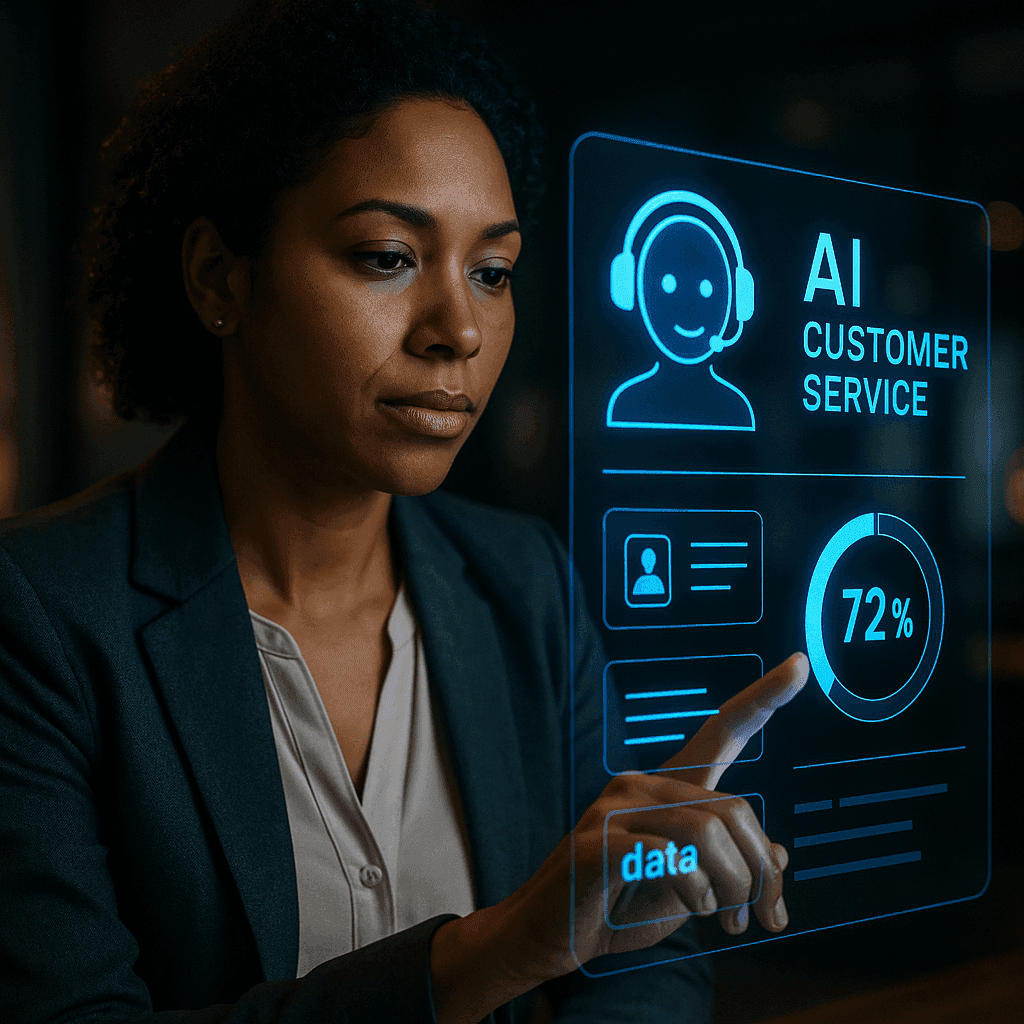The AI Family Tree: A No-Nonsense Guide to Artificial Intelligence, Machine Learning, and Deep Learning

Ever feel like you need a secret decoder ring just to keep up with tech talk? AI, Machine Learning (ML), Deep Learning (DL) – these terms get tossed around so much, it’s easy to get lost in the alphabet soup. But understanding their differences isn't just for tech gurus anymore. It’s crucial for any business looking to ride the wave of innovation in 2025. With generative AI and voice automation becoming mainstream, clarity is key. In fact, 70% of customers already see a significant gap between companies leveraging AI well and those stuck in the digital slow lane. Let's demystify these concepts and secure your strategic advantage.
The AI Family Tree: Who's Who in the Smart Machine Kingdom?
Think of AI as the largest Russian doll, encompassing all machines mimicking human intelligence. Inside, you'll find ML, and within ML, lies DL.
Artificial Intelligence (AI): The Grand Vision
AI is the broad field dedicated to creating systems that can reason, learn, perceive, and solve problems like humans. Early AI was about hand-coded rules. Modern AI, however, thrives on data-driven approaches, striving for true machine intelligence.
Machine Learning (ML): The Smart Learner
ML is a subset of AI where machines learn from data and make predictions without explicit programming. Instead of coding every rule, you feed it examples, and it figures out the patterns. Think of teaching a child to recognize a cat by showing them pictures, not a detailed rulebook. Traditional ML often needs structured, labeled data and some human guidance. It powers your Netflix recommendations and flags suspicious bank transactions.
Deep Learning (DL): The Self-Taught Genius
DL is a powerful subset of ML, using complex, multi-layered "neural networks" – inspired by the human brain – to learn directly from raw, unstructured data. What's its superpower? It automatically extracts features, eliminating the need for human data preparation. This makes DL incredibly effective for challenging tasks like understanding natural voice or recognizing faces, where manual feature engineering is impractical. DL achieves astounding accuracy (90%+ speech, 98%+ image recognition), but demands massive datasets and colossal computational power.
Why This Distinction Matters: Your Strategic Edge
Understanding the hierarchy and strengths of AI, ML, and DL is vital for informed business decisions and avoiding costly missteps.
| Concept | Hierarchy | Architecture | Data Need | Human Intervention (Feature Engineering) | Use Case Examples |
|---|---|---|---|---|---|
| AI | Broadest field | Any (rule-based, algorithms, ML, DL) | Varies | Medium–High | Reasoning, planning, robotics |
| ML | AI subset | Shallow neural nets, regression, clustering | Small–Medium | Moderate | Recommendation engines, fraud detection |
| DL | ML subset | Deep neural networks (3+ layers) | Very Large | Low (automated feature extraction) | Voice assistants, autonomous driving, generative AI |
Choosing the right technology hinges on your data type, volume, and problem complexity. Using traditional ML for complex image recognition is like bringing a bicycle to a Formula 1 race – you need DL's powerful engine.
Innovations Making AI More Accessible
The AI landscape is rapidly evolving, bringing advanced capabilities to more businesses:
- Automated Feature Engineering: DL's ability to extract features automatically speeds up development.
- Data Efficiency: Advances like transfer learning mean you don't always need colossal datasets for DL, opening doors for non-tech giants.
- Hybrid Models: Businesses increasingly blend ML for structured data and DL for complex, unstructured tasks (like sentiment analysis from voice calls), getting the best of both worlds.
- AI Democratization: Cloud platforms and open-source tools (TensorFlow, PyTorch) are putting powerful ML/DL in the hands of more businesses, enabling SMEs to experiment with advanced automation.
- Voice and Language AI: DL's progress has fueled major leaps in natural language understanding, powering real-time translation, smart assistants, and nuanced sentiment analysis.
AI in Action: Real-World Game Changers
You interact with AI, ML, and DL daily:
- Voice Assistants (Alexa, Siri): Pure Deep Learning magic. They understand your natural speech and turn it into actions.
- Self-driving Cars: DL helps them 'see' and react to the world, recognizing objects and making real-time navigational decisions.
- Fraud Detection by Banks: ML spots typical patterns, while DL dives deeper to catch sophisticated fraud.
- Personalization (Netflix, Spotify): ML recommends content based on preferences; DL enhances this by analyzing unstructured data like audio patterns or viewing habits.
- Healthcare Diagnostics: Deep Learning models now exceed human accuracy in analyzing medical images for diagnoses.
The Road Ahead: What's Next for AI?
The future of AI is thrilling, focusing on efficiency, transparency, and collaboration:
- Model Efficiency: Expect smaller, smarter, more energy-efficient AI models, enabling powerful AI on your smartphone (edge AI) or tiny sensors.
- Explainability and Trust: A strong push for "explainable AI" (XAI) means understanding why AI makes decisions, crucial for compliance and building trust.
- Human-AI Collaboration: AI will automate routine tasks, freeing human talent for creative, strategic, and deeply human interactions. Picture voice AI handling routine calls, letting your team focus on complex customer needs.
- Industry Penetration: By 2026, AI (especially powered by ML and DL) will be embedded in virtually every sector. IDC predicts over $500 billion in AI investments, with rapid growth in voice automation for customer service and operations.
Your Call to Action: Navigating the AI Frontier
A clear understanding of AI, ML, and DL is your ultimate secret weapon. It helps you cut through the hype, choose the right tools, and avoid costly missteps. Especially in voice automation, where AI is set to revolutionize customer experience, knowing the nuances makes all the difference.
Here’s what your business needs to do:
- Balance Ambition with Realism: Evaluate AI use cases by their potential and practical demands: data needs, model complexity, compute resources, and explainability.
- Seize the Strategic Opportunity: Companies leveraging the latest ML and DL capabilities will automate more processes, enhance customer experiences, and unlock new markets, particularly in voice and conversational AI.
- Take Actionable Next Steps: Invest in training for your teams, clarify AI nomenclature internally, and partner with vendors (like Voice2Me.ai!) who can help you navigate this evolving AI stack with expertise.
Don't just watch the future unfold; understand it, embrace it, and lead the charge. The difference between AI, ML, and DL isn't just academic – it's your competitive edge.
More Articles

The CX Revolution: 65+ AI Customer Service Stats You Need for 2025
Explore how AI is rapidly transforming customer service by 2025, from lightning-fast chatbots to hyper-personalization, and why a human touch still matters.

Is AI Taking Over Customer Service? What 2025 Really Looks Like
Explore how AI is reshaping customer service in 2025, from hyper-personalization to autonomous agents, and discover the essential balance between efficiency and the human touch.